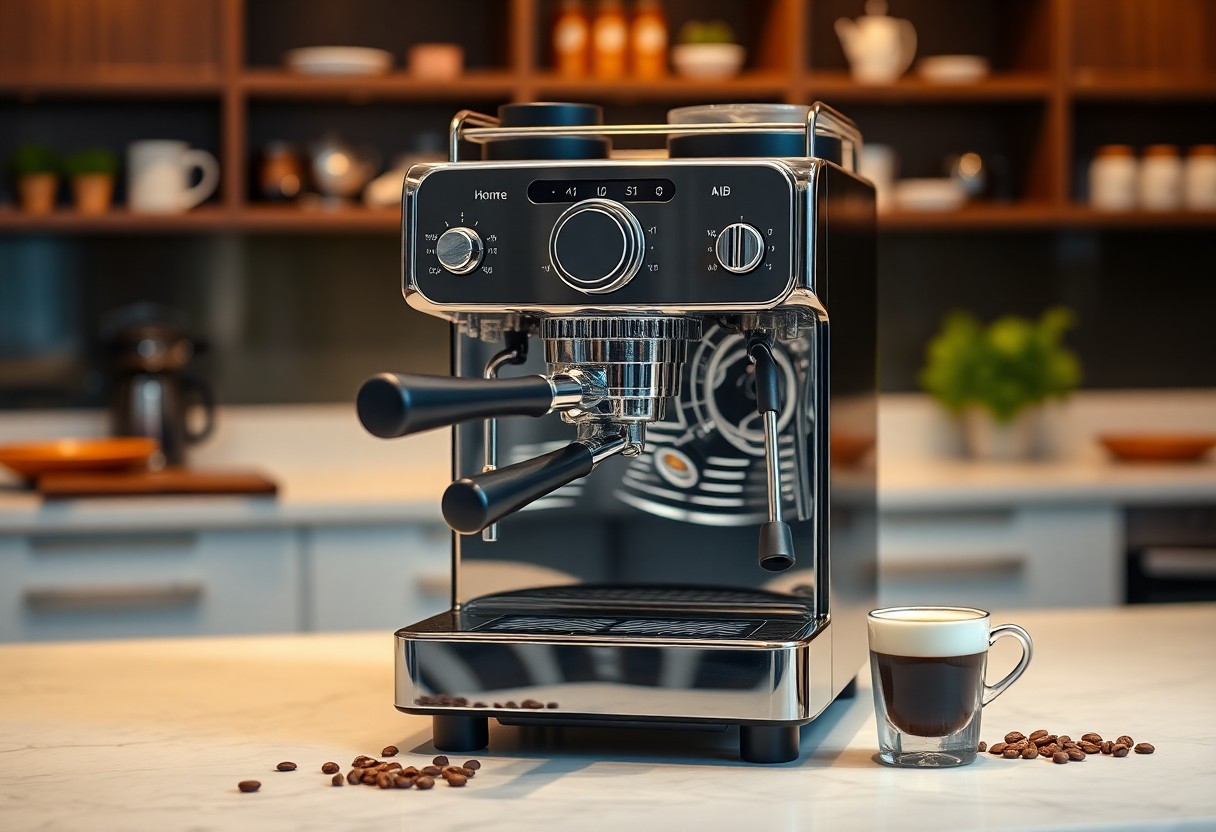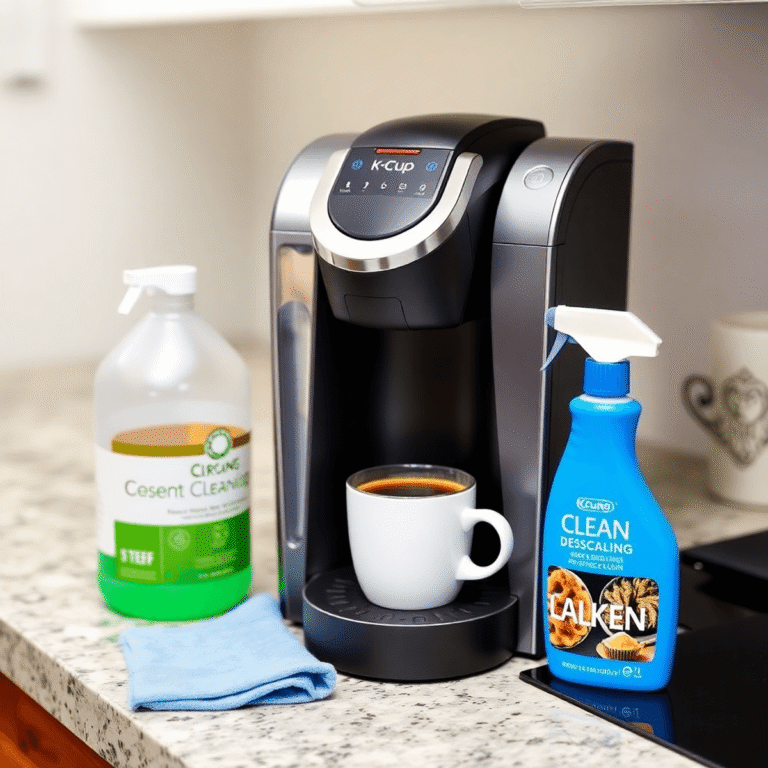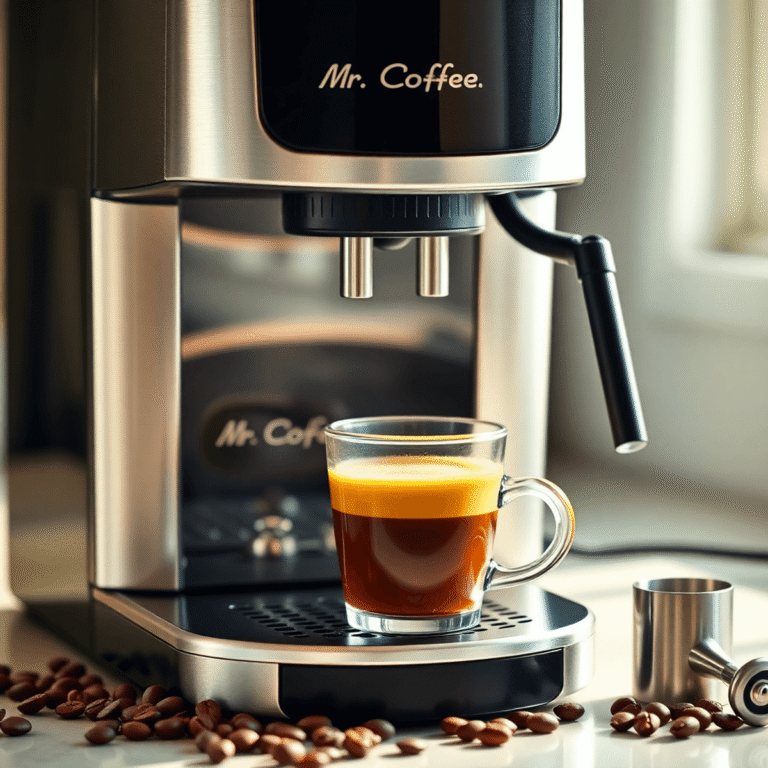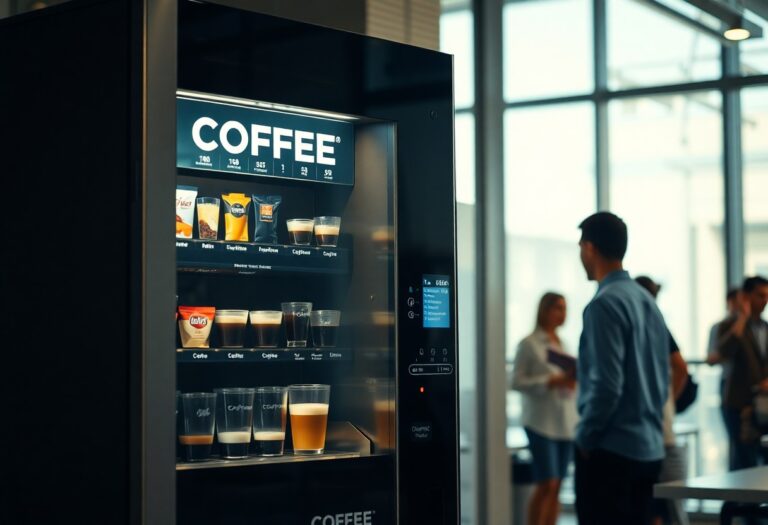What is a Coffee Making Machine Called – Technical Terms
Technical terminology in the world of coffee-making machines can be overwhelming, but understanding these terms can enhance your brewing experience. By familiarizing yourself with terms like espresso machine, drip coffee maker, and French press, you’ll not only expand your knowledge but also improve your ability to select the right machine for your needs. Whether you’re a casual coffee drinker or an avid enthusiast, knowing the distinctions between these devices will empower you to make more informed choices and optimize your daily caffeine ritual.
Key Takeaways:
- The primary equipment for brewing coffee is generally referred to as a “coffee maker” or “coffee brewing system.”
- Common types of coffee makers include drip coffee machines, espresso machines, French presses, and single-serve pod machines.
- Technological features such as programmable settings, built-in grinders, and milk frothers can enhance the functionality of coffee machines.
- Terms like “percolator” and “turkish coffee pot” describe specific styles of coffee preparation that have unique brewing processes.
- Understanding these technical terms can help consumers make informed choices when selecting a coffee-making machine.
The Nomenclature of Coffee Machines
Understanding the terminology associated with coffee machines can greatly enhance your brewing experience. Each type of appliance has its specific name and function, from espresso machines to drip coffee makers. If you’re curious about the different varieties, check out this comprehensive list of Types of Coffee Machines. Familiarizing yourself with these terms can help you make informed decisions when purchasing or using your coffee equipment.
Defining the Basics: Coffee Maker vs. Coffee Machine
While the terms “coffee maker” and “coffee machine” are often used interchangeably, there are slight distinctions. A “coffee maker” typically refers to any device designed to brew coffee, including simple drip models, whereas “coffee machine” may denote more complex systems that can offer various functionalities, such as grinding beans or controlling brewing temperatures.
Common Terminology in the Coffee Brewing World
In the coffee brewing world, terminology can be expansive, encompassing various functions and features of different machines. Terms like “brew strength,” “grind size,” and “extraction time” are all key parameters that can affect your cup’s flavor profile. Understanding these terms can improve your coffee-making skills, allowing you to customize your brews to your liking.
Some terms, like “single-origin” and “blend,” highlight the coffee’s source and flavor characteristics. “Brew strength” refers to the concentration of coffee in your cup, while “extraction time” is how long water interacts with coffee grounds, influencing flavor. In addition, knowing the difference between “espresso” and “drip coffee” can help you choose your preferred method of brewing. Enhancing your coffee vocabulary ensures that every cup you make is tailored precisely to your taste.
Navigating the Diverse Coffee Brewing Options
Your choice of coffee brewing method can dramatically affect the flavor and strength of your daily cup. With a myriad of options available, each method boasts its unique benefits and learning curves. From the convenience of automatic machines to the hands-on techniques of manual brewing, understanding these various options can help you discover your perfect cup of joe.
Drip Coffee Makers: A Staple in the Kitchen
Drip coffee makers are one of the most popular brewing options, making them a staple in many kitchens. They operate by heating water and then dispersing it over coffee grounds, allowing the brewed coffee to drip into a carafe below. This straightforward process can yield multiple cups at once, making it ideal for serving family or guests.
Espresso Machines: The Art of the Perfect Shot
Espresso machines are designed to extract rich, concentrated coffee by forcing hot water through finely-ground coffee at high pressure. This method results in a strong and flavorful shot, complete with a layer of crema that acts as a seal for the aroma and flavor. Mastering espresso can elevate your coffee experience to new heights and serve as a base for a variety of coffee beverages, including lattes and cappuccinos.
Beyond simply brewing coffee, owning an espresso machine allows you to experiment with different grinds, volumes, and pressures to perfect your personal shot. Quality machines feature programmable settings and steam wands for frothing milk, giving you control over the entire brewing process. Whether you’re an aspiring barista or a casual enthusiast, investing in an espresso machine opens a world of possibilities.
French Press and Pour-Over: Manual Methods with a Following
Manual brewing methods like the French press and pour-over have gained a dedicated following for their ability to highlight coffee’s complex flavors. Both techniques require more hands-on involvement but reward you with a richer, fuller-bodied cup. They encourage precision in your brewing parameters, such as the coffee-to-water ratio and brewing time, allowing you to personalize your brew to perfection.
With the French press, you immerse coarsely ground coffee in hot water, then press down a metal filter to separate the grounds from the liquid. In contrast, the pour-over method involves manually pouring water over coffee grounds placed in a filter, which allows for greater control over extraction. This attention to detail can significantly enhance your coffee’s taste profile, making these manual methods beloved among coffee aficionados.
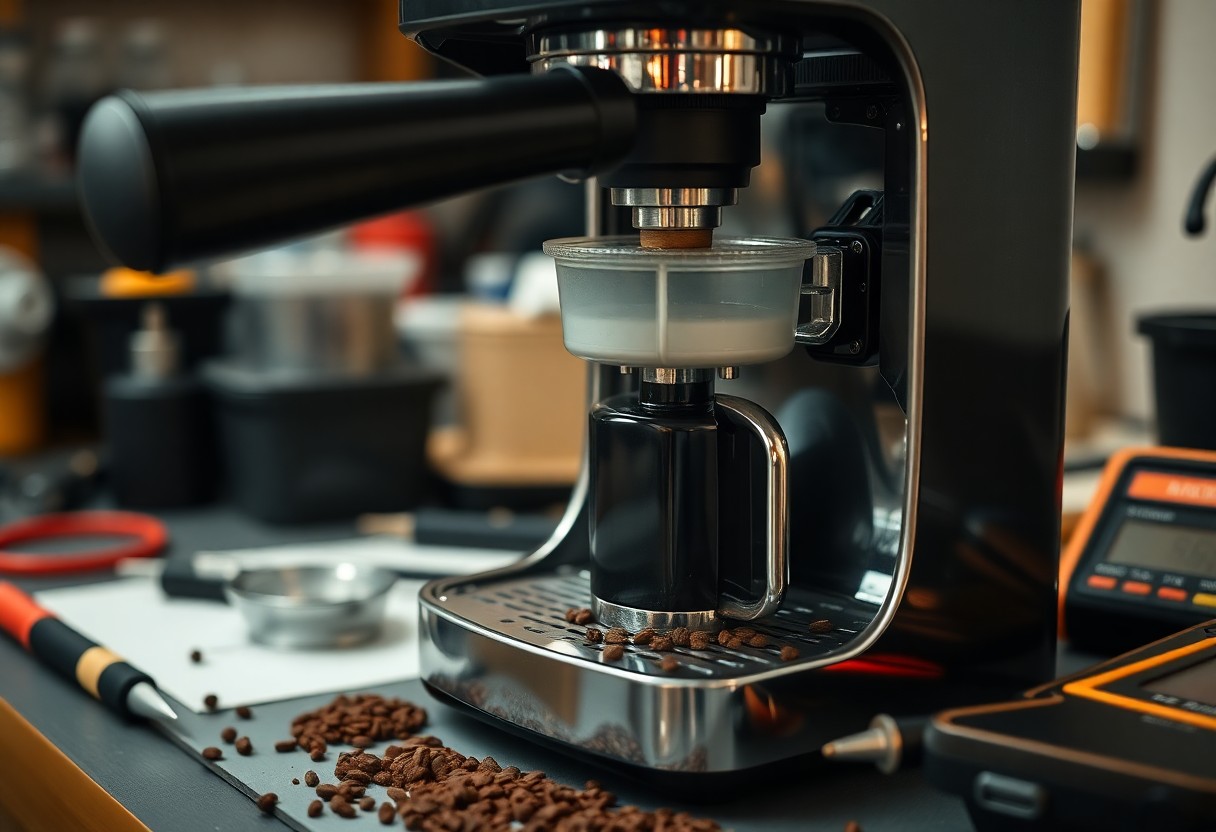
The Internal Components: What Makes a Coffee Machine Tick
Your coffee machine operates through an intricate system of parts that work together to produce that perfect cup of coffee. These internal components are the unsung heroes of your brewing process, ensuring that every element from water temperature to extraction time is finely tuned. Understanding how these parts interact helps you appreciate your machine’s performance and can guide you to make the best coffee possible.
Key Components: Heating Elements and Brew Heads
Heating elements are integral to any coffee machine, as they elevate water to the optimal brewing temperature, typically between 195°F and 205°F. Brew heads, on the other hand, are where the magic happens — they disperse hot water evenly over coffee grounds, promoting even extraction every time you brew. Understanding these components allows you to select a machine that delivers a consistently excellent cup.
Understanding Water Pressure: The Science of Good Coffee
The water pressure within your coffee machine plays a pivotal role in ensuring a rich, full-bodied flavor in your brew. Typically, 9 bars of pressure is ideal for espresso extraction, as it pushes water through the coffee grounds efficiently, releasing aromatic oils and preserving flavor integrity. A higher or lower pressure can lead to over-extraction or under-extraction, significantly altering the taste.
Engaging with the science of water pressure reveals why different brewing methods vary in effectiveness. For example, espresso machines exert a high-pressure system that extracts flavors rapidly, while drip coffee relies on gravity and lower pressure, resulting in a milder, sometimes less complex flavor profile. Knowing the pressure settings helps you better match your coffee preferences, so you can create the perfect brew tailored to your taste.
Revolutionary Innovations in Coffee Machine Technology
Advancements in coffee machine technology continuously reshape how you enjoy your daily brew. Smart features, enhanced brewing methods, and advanced materials have emerged to cater to a more refined coffee experience. From The Complete Guide to Espresso Machine (and Grinder!) to automated milk frothers, every innovation prioritizes flavor, convenience, and sustainability, giving you a plethora of options to enhance your coffee ritual.
Smart Coffee Machines: The Future of Brewing
Smart coffee machines integrate with your smartphone, allowing you to adjust brewing parameters remotely. You can schedule brews or customize settings based on your preferences, which means your perfect cup is waiting for you when you wake up. Some models even incorporate artificial intelligence to learn your habits and optimize the brewing process accordingly, ensuring you always have the ideal coffee experience without the hassle of manual adjustments.
Eco-Friendly Designs: Sustainability in Coffee Making
Eco-friendly coffee machines focus on reducing waste and energy consumption while maintaining high-quality brews. These designs often incorporate sustainable materials and energy-efficient technologies that appeal to environmentally conscious consumers.
By utilizing biodegradable components and minimizing plastic use, modern coffee machines support sustainable practices. For example, some brands have introduced machines that operate on renewable energy sources or feature programmable settings to reduce standby energy consumption. Additionally, advancements in reusable coffee pods contribute to less landfill waste, further enhancing your sustainable coffee-making journey.
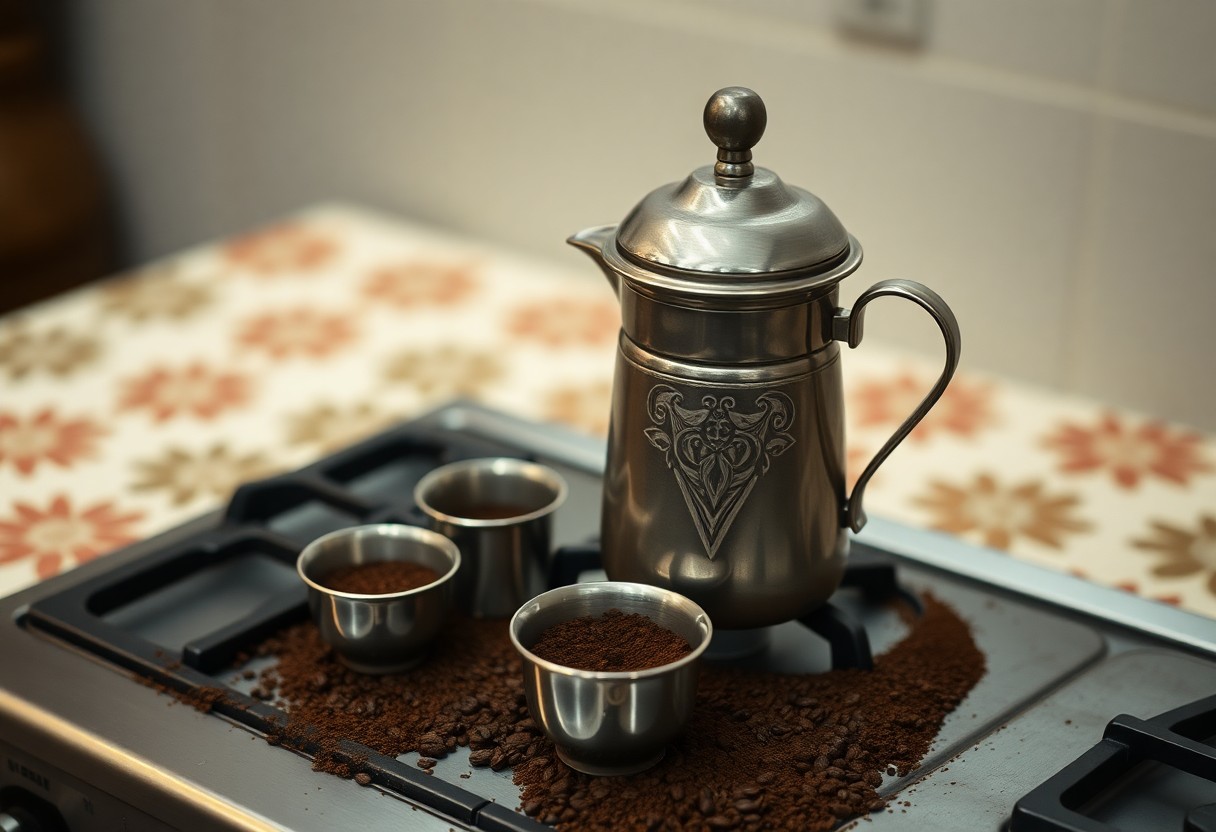
Cultural Perspectives: Coffee Machines Around the World
Your morning brew often reflects more than just taste; it represents a cultural significance found in various parts of the globe. While espresso machines dominate coffee culture in Italy, in Turkey, traditional cezve is integral to serving the rich, strong coffee that fosters social gatherings. Different nations share their customs around coffee preparation and consumption, highlighting how the methods used and the machines involved can shape community and connection.
Global Preferences: Regional Coffee Machine Variations
Regional preferences for coffee machines reveal a lot about local traditions. In Scandinavia, pour-over methods are celebrated, emphasizing meticulous brewing to bring out specific flavor notes. Conversely, much of South America favors the use of classic stovetop moka pots, producing a distinctive, bold coffee that’s perfect for casual meals or family gatherings. Your choice of machinery is often intertwined with cultural identity and lifestyle, shaping how you connect with your coffee experience.
The Rituals and Traditions Shaping Coffee Consumption
Coffee consumption is steeped in rituals that vary widely across cultures. In some countries, laying out a coffee setup invites friends and family to partake in leisurely conversations, while others may have a more ceremonial approach, such as Japan’s coffee tasting sessions that celebrate the artistry and precision of brewing. Each gathering offers an opportunity to explore flavors and bonds, creating a rich tapestry of experiences that center around this beloved beverage.
These rituals often come with specific tools, too, like the french press in France or the more elaborate siphon coffee maker in Japan. Engaging in these practices not only enhances the flavor but deepens your respect for the craft of coffee-making. For instance, in Ethiopia, coffee is a communal activity where the coffee ceremony can last up to several hours, allowing you to engage in rich conversations and compounding social ties. Such traditions create an immersive experience where coffee transcends mere consumption; it becomes a way to connect, celebrate, and honor heritage.
To Wrap Up
Drawing together the various technical terms associated with coffee making machines, you should now have a clearer understanding of the terminology that defines this intricate world. Whether you’re referring to an espresso machine, drip coffee maker, or a single-serve brewer, knowing these terms enhances your experience and appreciation for the art of coffee making. Familiarizing yourself with these names not only empowers you in conversations about coffee but also helps you choose the right equipment tailored to your personal brewing preferences and tastes.
FAQ
Q: What is a coffee brewing machine commonly referred to as?
A: A coffee brewing machine is commonly referred to as a coffee maker. This term encompasses a variety of devices designed for the purpose of brewing coffee, including drip coffee makers, espresso machines, single-serve brewers, and more. Each type of coffee maker operates differently but serves the same fundamental purpose of producing coffee.
Q: What is the difference between an espresso machine and a drip coffee maker?
A: An espresso machine is designed to brew coffee by forcing hot water through finely-ground coffee under high pressure, resulting in a concentrated and robust beverage known as espresso. In contrast, a drip coffee maker brews coffee by having hot water gradually drip through a filter filled with coarsely ground coffee, typically producing a milder flavor that is larger in volume. The two machines cater to different preferences in coffee strength and preparation methods.
Q: What are the technical terms associated with coffee brewing?
A: Some necessary technical terms associated with coffee brewing include “extraction,” which refers to the process of dissolving compounds from coffee grounds into water; “grind size,” which indicates the coarseness or fineness of the coffee grounds; and “brew time,” which is the duration the water is in contact with the coffee grounds. Understanding these terms can enhance one’s coffee-making skills and help achieve the desired flavor profile.
Q: What is a burr grinder and how does it function?
A: A burr grinder is a device used to grind coffee beans into uniform particles, which is crucial for achieving consistent extraction during brewing. Unlike blade grinders, which chop beans unevenly, burr grinders use two revolving abrasive surfaces (burrs) to crush the beans at a controlled speed. This produces a more consistent grind size, which can significantly impact the flavor and strength of the brewed coffee.
Q: What does the term “brew ratio” refer to in coffee preparation?
A: The term “brew ratio” refers to the proportion of coffee grounds to water used during the brewing process. This ratio affects the coffee’s strength and flavor. Commonly, a brew ratio is expressed as a weight measurement, such as 1:15, meaning for every 1 gram of coffee, there are 15 grams of water. Adjusting the brew ratio allows coffee enthusiasts to customize the taste and intensity of their coffee.

